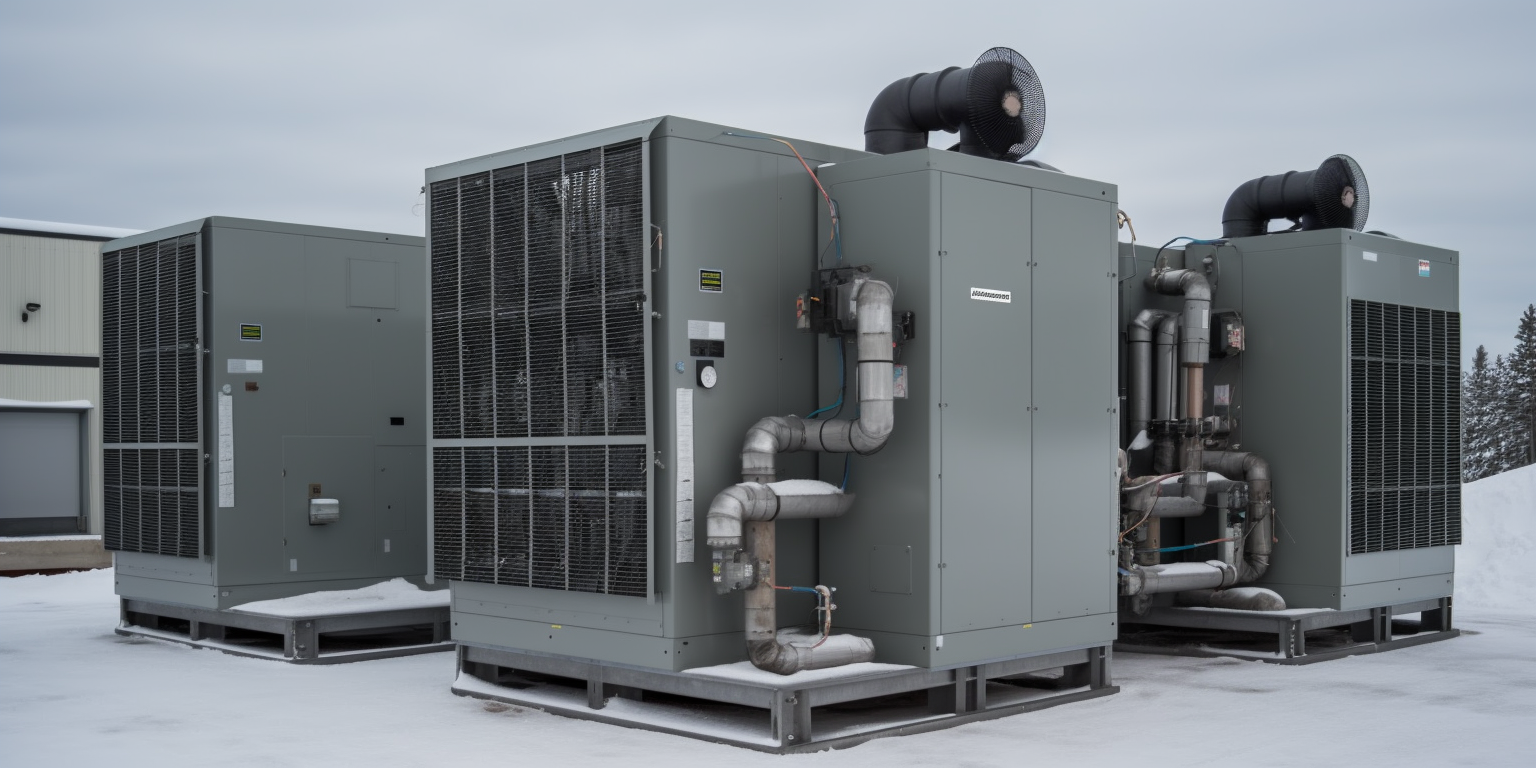In your refrigeration system, the filter drier occupies a critical spot. You’ll typically find the filter drier installed in the liquid line, between the condenser and the expansion valve. This strategic location ensures that the refrigerant, after going through the compression and condensation processes, gets purified before it enters the evaporative phase.
The filter drier plays an essential role in trapping any moisture or contaminants within the system. It ensures that the refrigerant entering the evaporator coil is pure and dry. This function is vital because any impurities or moisture in the refrigerant can hinder system performance and potentially cause significant damage.
The filter drier, being an unsung hero, works tirelessly to ensure the optimal performance of your refrigeration system. While it may not be the first component that comes to mind when you think of your refrigeration system, its location and function make it one of the most crucial pieces of the cooling puzzle.
Remember, a well-maintained filter drier contributes to the health and longevity of your refrigeration system. Regular check-ups can help identify any potential issues early and avoid costly repairs down the line. Next time you give your refrigeration system a once-over, don’t forget about the ever-important filter drier!
Where is the optimal location for the filter drier in a refrigeration system?
In a refrigeration system, the ideal location for the filter drier is just before the expansion device, within the liquid line. Placing the filter drier here ensures it can effectively remove any moisture or contaminants from the refrigerant before it passes through the expansion device and evaporator coil. This positioning helps to safeguard against the potential for blockages or freezing in the expansion device, both of which can significantly hamper system performance.
The filter drier serves as a crucial protective component within the refrigeration system, guarding against moisture, acids, and other contaminants that could cause damage or efficiency loss. By optimally placing the filter drier, you’re not only enhancing your system’s performance, but also extending its lifespan and reducing the need for costly repairs.
Remember, the filter drier should be located in an area that’s easily accessible for maintenance purposes. Regular checks and replacements will ensure the filter drier continues to operate efficiently and protect your refrigeration system from harmful contaminants.
Please note, this is a general guideline. Depending on the unique specifications and layout of your refrigeration system, the ideal location of your filter drier may vary. Always consult with a qualified professional to ensure accurate installation.
What are the different types of filter driers?
Filter driers play an integral role in your HVAC system, ensuring optimal operation by removing moisture, contaminants, and acids. There are mainly three types of filter driers you’ll come across: liquid line, suction line, and bi-flow driers.
Liquid line driers, as the name implies, are installed in the liquid line of the HVAC system. They’re fantastic at trapping and removing unwanted contaminants before they can damage your compressor. This type of drier helps extend the life of your HVAC system by ensuring that only clean refrigerant reaches the system’s vital components.
Suction line driers, on the other hand, are typically used as a temporary solution following a system burnout or when servicing the unit. They’re installed on the suction line to capture acids and contaminants that may have been released during a compressor malfunction. After the cleanup process, it’s standard practice to remove the suction line drier.
Lastly, we have bi-flow driers. These driers are designed for heat pump systems, which require refrigerant flow in both directions. Bi-flow driers effectively remove moisture and contaminants regardless of the direction of the refrigerant flow, making them an excellent choice for heat pump systems.
Remember, the type of filter drier you choose can significantly impact your HVAC system’s performance. So it’s crucial to understand the different types to make an informed decision.
How frequently should a filter drier be replaced or maintained?
In your HVAC system, the filter drier plays a crucial role. Follow this general rule of thumb – whenever your system undergoes a major repair, change the filter drier. Please note that the replacement frequency varies depending on the system’s location and usage.
If your system works continuously and the filter drier is exposed to higher pressures and temperatures, you may need to inspect and potentially replace it more often. However, in less demanding environments, your filter drier could last longer.
Make regular preventive maintenance of your HVAC system a habit, including your filter drier. Many professionals recommend a thorough check-up at least once a year, ideally before the start of a new season.
Keep in mind, the filter drier is there to protect your system. It filters debris and absorbs moisture. If you don’t change it for an extended period, system efficiency might decrease and major damages could occur over time.
There isn’t a definitive timeline for changing a filter drier, but its upkeep should form part of your regular HVAC system check-up. If unsure, always seek advice from a professional HVAC technician. They can offer guidance tailored to your specific system and usage.
What are the specific signs that indicate a problem with the filter drier?
When it comes to your HVAC system, the filter drier plays a crucial role in keeping the system running smoothly. But how can you tell if there’s a problem with it? Here are a few signs to watch out for.
Firstly, your system may start to run less efficiently. If you notice an increase in your energy bills without a significant change in use, it could be an indication that the filter drier is not working properly.
Secondly, you may hear unusual noises. If the filter drier is blocked or damaged, your system may start to make strange sounds as it struggles to function.
Thirdly, the temperature in your home might fluctuate or fail to reach the desired level. This can be due to the filter drier failing to remove moisture or contaminants effectively.
Fourthly, you could experience a refrigerant leak. The filter drier is responsible for preventing moisture and contaminants from entering the refrigerant. If it’s faulty, it could lead to refrigerant leaks, which are often noticeable as a pool of liquid near the unit.
Finally, if the filter drier is blocked, it could lead to ice forming on the coil. This ice can cause the HVAC system to freeze up, stopping it from working altogether.
So, if you encounter any of these signs, it’s probably time to inspect your filter drier. Remember, addressing the issue promptly can prevent further damage to your HVAC system. Keep your filter drier in check to ensure a comfortable and healthy living environment!
How does the filter drier affect the overall efficiency of the refrigeration system?
The filter drier plays an integral role in enhancing the efficiency of the refrigeration system. Acting as a guard, it eliminates unwanted contaminants, preventing them from circulating throughout the system. These contaminants, which include moisture, acids, and particulates, can cause serious harm, affecting the system’s performance and longevity.
Moisture, in particular, poses a substantial threat. It can freeze within the system, leading to blockages and impairing the flow of refrigerant. By meticulously removing this moisture, the filter drier ensures smooth and uninterrupted operation of your refrigeration system.
The filter drier also plays a crucial role in preventing acid build-up. Acids can corrode crucial components, deteriorating their functionality over time. The filter drier traps particulates, protecting the expansion valve – a key component of the refrigeration system. If these particulates reach the expansion valve, they can cause blockages, reducing the overall efficiency of the system.
What new tech innovations can help maintain refrigeration systems?
In the realm of refrigeration systems, new tech innovations are playing a pivotal role in enhancing performance and ensuring longevity. Among these, filter driers are standing out for their exceptional contribution.
Filter driers are designed to capture and eliminate contaminants, ensuring your refrigeration system runs smoothly and efficiently. They are the silent guardians of your refrigeration system, keeping out harmful substances like moisture and acid, which can damage system components.
One innovative feature in the newer models of filter driers is the incorporation of a moisture indicator. This handy addition provides a quick and easy visual indication of the moisture level within the system. This means you can proactively take action before any damage, like corrosion or ice formation, can occur.
Where does technology come into play? Well, smart filter driers are now hitting the market. These tech-savvy tools are capable of self-monitoring and alerting you to any potential issues. They take the guesswork out of maintenance, allowing you to focus on other tasks with peace of mind.
Another tech innovation is the introduction of predictive analytics in refrigeration system maintenance. By analyzing data from various components including the filter drier, this technology can predict potential system failures or maintenance needs in advance, enabling preventative maintenance and reducing downtime.
Tech innovations like smart filter driers and predictive analytics are revolutionizing the way we maintain refrigeration systems. They make the process simpler, more efficient, and proactive, resulting in improved performance and longevity of the systems. Remember, a happy refrigeration system means happier customers, and that is always a win!
Key Takeaways:
- The filter drier is a vital component of your HVAC system, helping to maintain its efficiency by removing moisture and contaminants.
- Detecting a problematic filter drier involves observing changes such as increased energy bills, unusual noises, fluctuating temperatures, refrigerant leaks, and ice formation on the coil.
- The filter drier enhances the efficiency of the refrigeration system by eliminating contaminants that can cause blockages and wear and tear.
- Innovative technology, like smart filter driers and predictive analytics, is revolutionizing refrigeration system maintenance, making the process more efficient and proactive.



